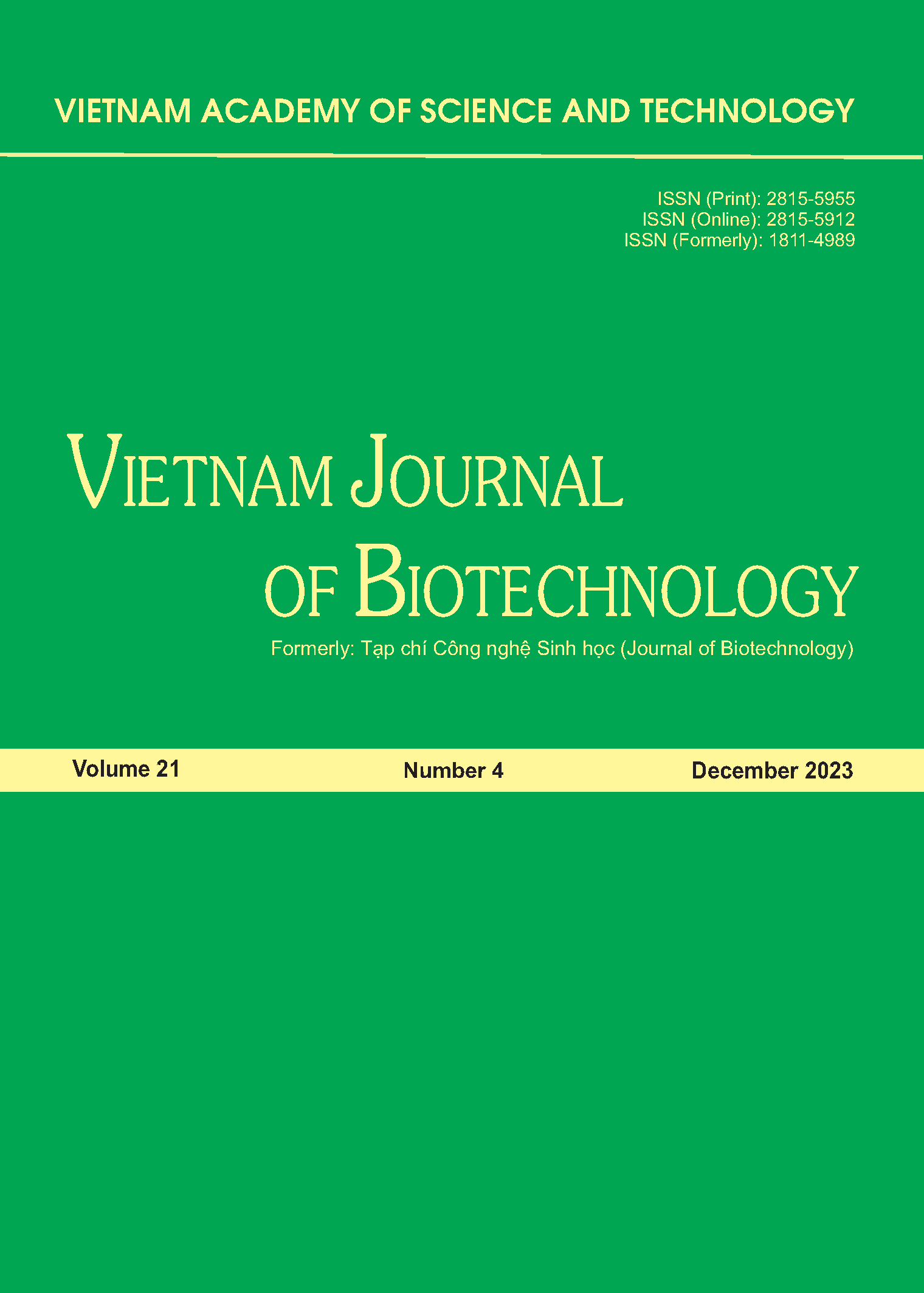Antioxidant and antithrombotic activities of the Distichochlamys citrea leaves extract
Author affiliations
DOI:
https://doi.org/10.15625/1811-4989/18629Abstract
Distichochlamys citrea (DC) is an endemic ginger species used in treating associated-heart diseases in traditional medicine in Vietnam. However, scientific evidence to support the local use of this plant was limited. The present study aimed to investigate the antioxidant and antithrombotic activities of D. citrea extracts for the first time. The antioxidant activity of DC extracts was assessed by scavenging DPPH radical and measuring their total phenolic content (TPC). The antithrombotic activity was evaluated by inhibiting platelet aggregation and prolonging blood coagulation. Volatile components elucidated by GC-MS were docked with typical platelet receptors, including COX-1 and P2Y12. Results showed that the methanol extract of D. citrea exhibited a stronger DPPH scavenging ability (IC50 = 0.33 ± 0.00 mg/mL) and a higher TPC (8.09 ± 0.21%) than other extracts (p < 0.05). On the other hand, the hexane extract of D. citrea (DC-HX) had a remarkable inhibiting impact on ADP-, collagen- and ristocetin–induced platelet aggregation in a dose-dependent manner (Pearson’s correlation, r > 0.90, p < 0.05). In contrast, this extract did not lengthen the clotting time through any factors, such as PT (prothrombin time), and TT (thrombin time), except for APTT (activated partial thromboplastin time) at 4 mg/mL of the extract. GC-MS revealed that oxygenated hydrocarbons (54.45%) dominated the volatile profile of DC-HX, followed by sesquiterpens (37.18%) and diterpenes (6.66%). In the platelet aggregation process, several compounds in DC-HX were firmly bound to COX-1 and P2Y12, which might partly explain the significant antiaggregatory activity of this fraction. In conclusion, Distichochlamys citrea may be a potential source of active phytoconstituents for treating radicals- and cardiovascular-associated diseases.







